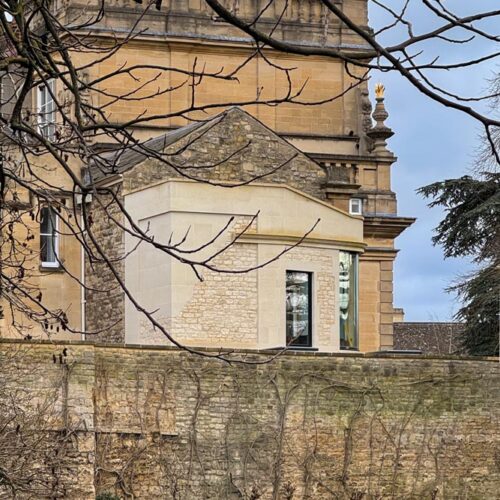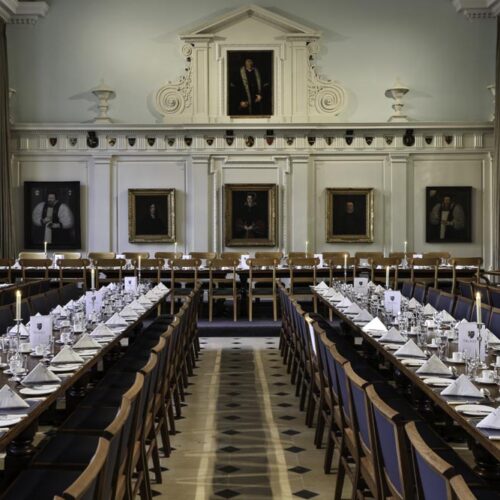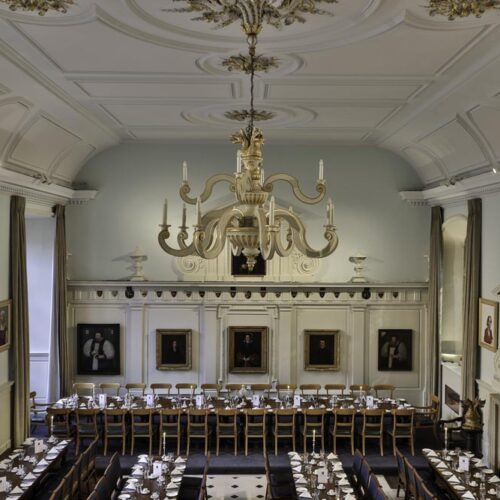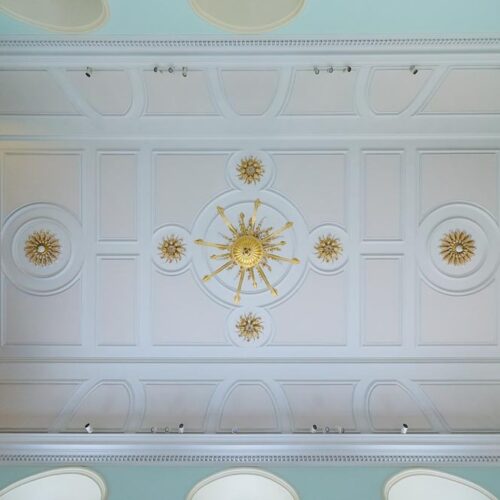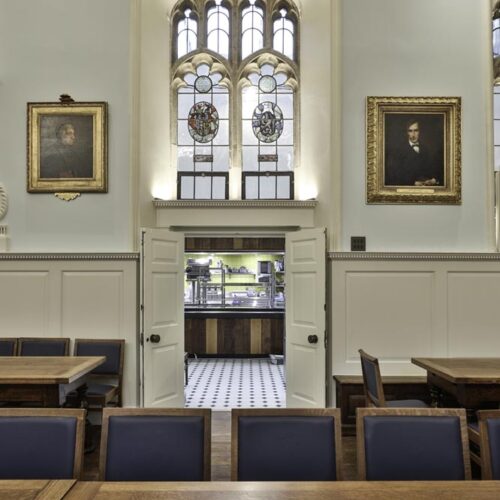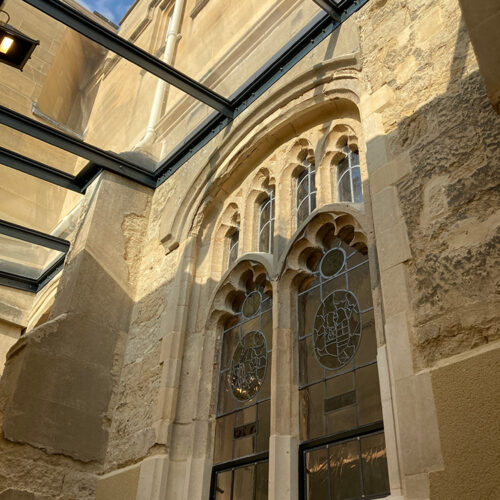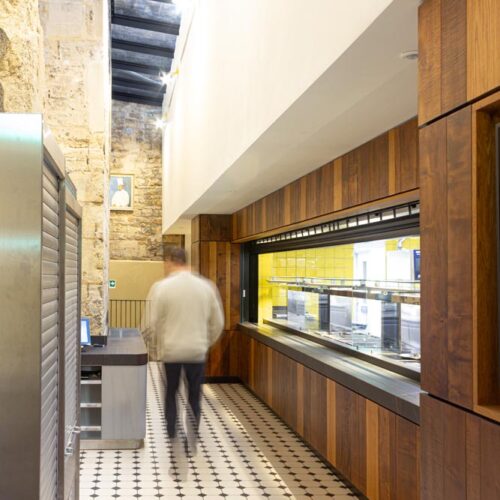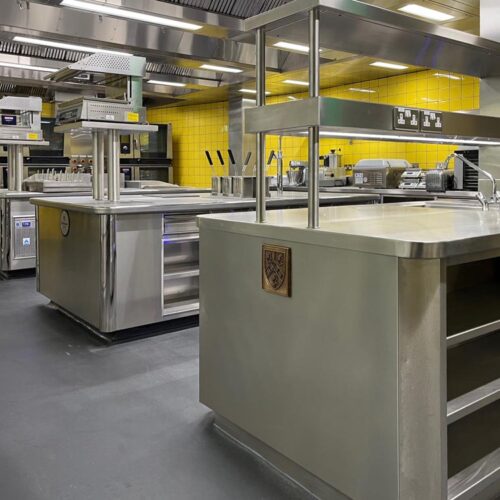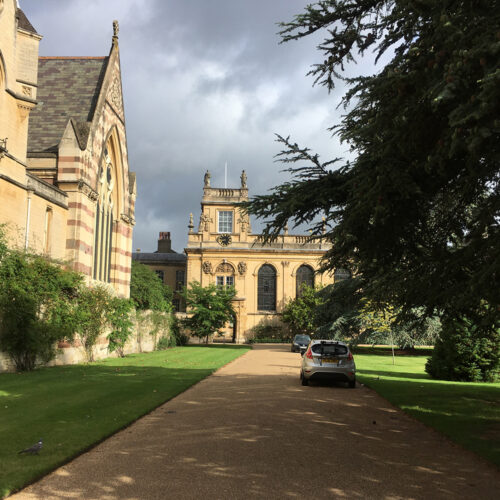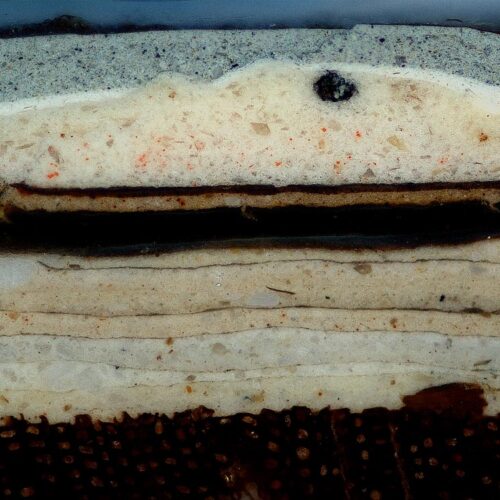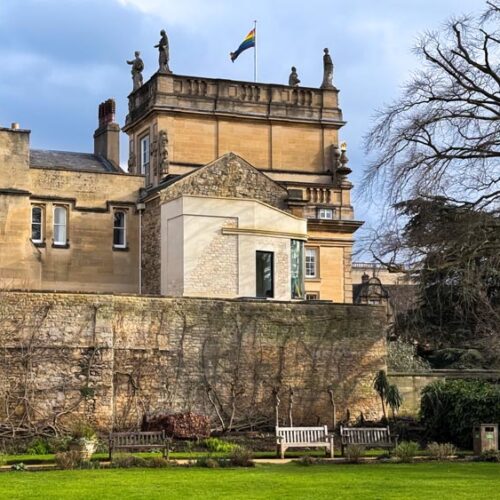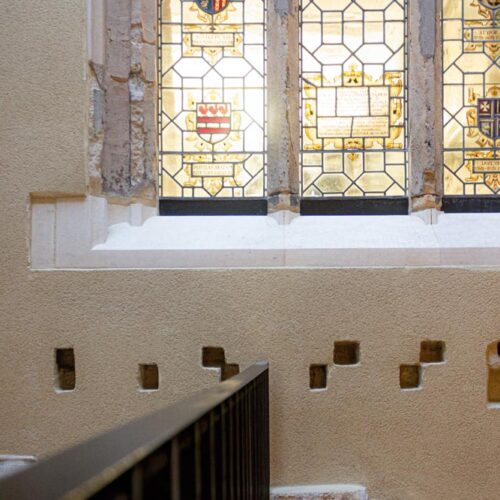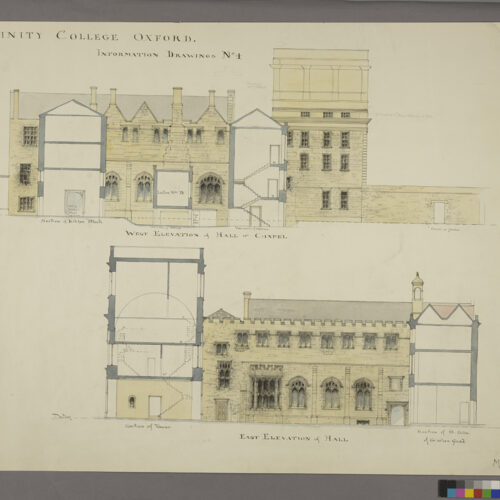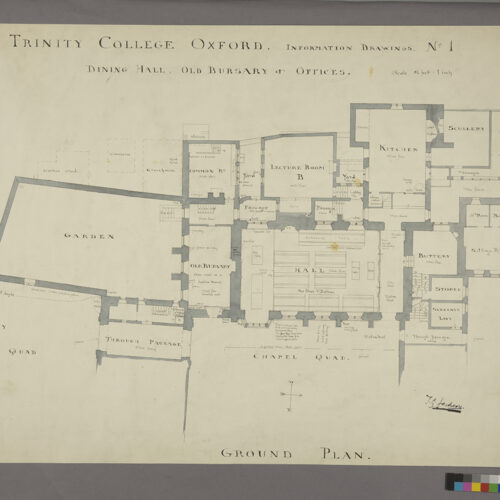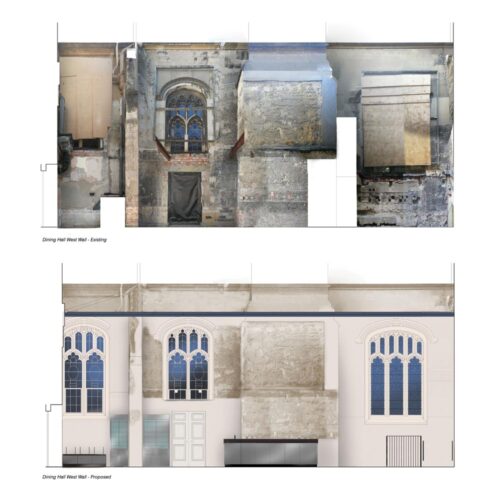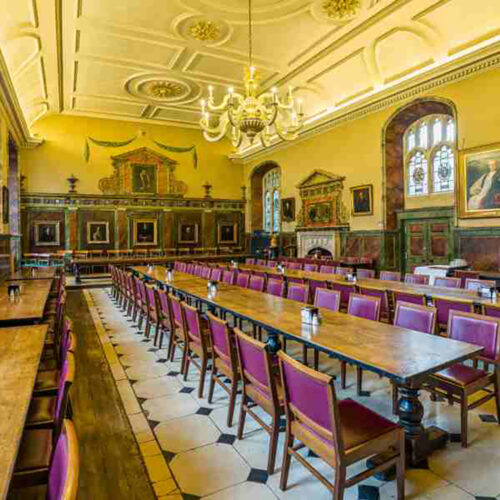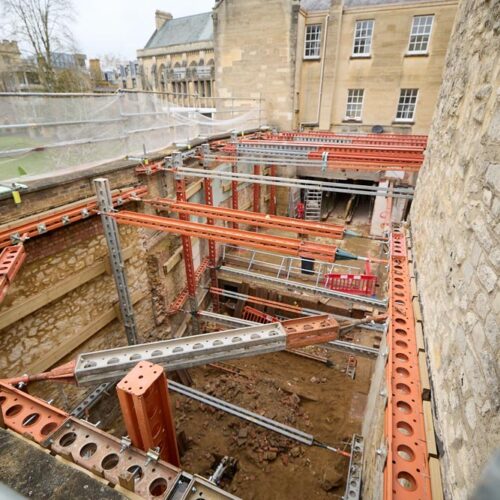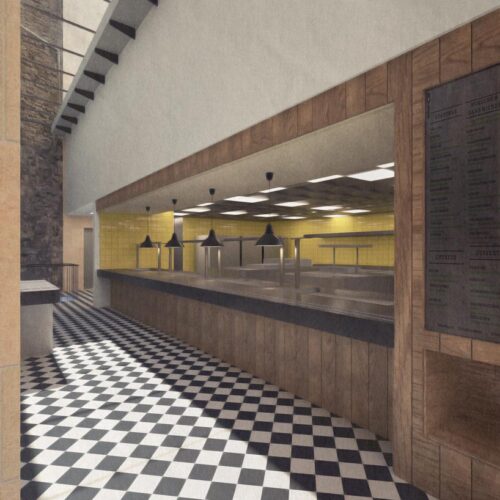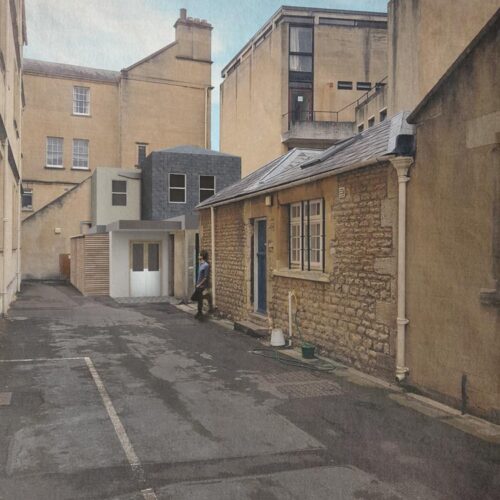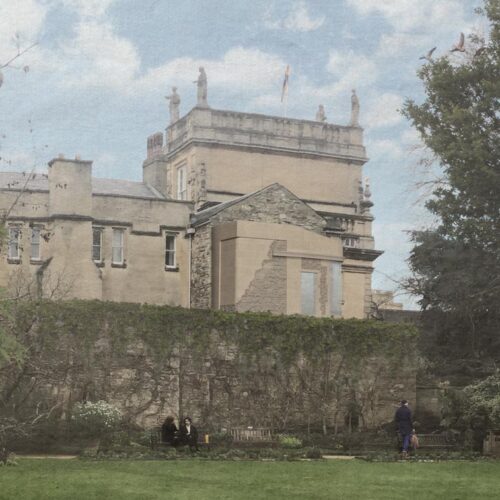Senior Common Room (SCR), Hall, Kitchen And Stair 11
Ambitiously, the project involves the alterations and refurbishment of the existing Student Common Room (SCR), Dining Hall and Kitchen at Trinity College. It includes the insertion of a new equal access lift to service the SCR, Basement bar and Kitchen/Servery level and conversion of Stair 11 student bedrooms into Fellows rooms. All areas are to be refurbished with necessary alterations and modifications to provide new state of the art facilities.
The project is nestled in the far western edge of the site. Wedged between three Grade 1 listed buildings including remnants of the original 13th Century Durham College, the proposed works presents many challenges for the integration of new and refurbishment works. Key project requirements that had a significant impact on the proposal include a new appropriately sized servery and provision of an equal access lift linking all levels of the SCR and basement student bar. Understanding the impact of these works on the historic building fabric, combined with achieving a satisfactory design outcome, was necessary. Careful consultation with the Local Authority Conservation Officer and Historic England was integrated into the design process.
Key design objectives for the project include:
- Reinstate the clarity of historical building features where possible;
- Prioritise the retention of existing building features;
- Ensure new interventions are subservient and in contrast to the original building fabric to emphasise difference;
- Provide wheelchair and ambulant access to as many levels as possible within the buildings;
- Provide interior concepts that enhance the historical intent of the experience;
- Future-proof the ongoing use of the buildings;
- Improve the food delivery service in the Kitchen and Servery;
- Provide new and improved staff amenities;
- Enhance the Hall dining experience with a well-considered and sensitive interior concept;
- Improve efficiency for the delivery / service courtyard and;
- Provide services systems in accordance with current practice, that are compliant with regulatory requirements.
The existing servery location is retained but enlarged and extended as a soft edge along the neglected and lost west façade of the Hall. A double height clerestory provides an engaging and memorable space to link the servery, hall and SCR lift. To the east, the hall façade is retained including all of the decay and modifications imposed on it. To the west, the servery provides a boundary to the new sparkly kitchen beyond, at the southern end of the SCR and new lift connecting all levels.
In establishing a contextual design approach to the Lift Tower in the early stages of the project, a detailed study of the stone façade has been developed. Clad in stone, the extension is composed of a combination of dressed and rubble limestone with contrasting frameless glass. A stone cornice links the glazing with the lift shaft to articulate the different functions and provide horizontality to the element. The stonework reflects eclectic layering in the existing buildings. Stone replacement and repairs, combined with alternative finishes and varied stone detailing, mix to create a characterful facade. To celebrate the original gable end wall, surviving traces of its history are retained in the new building element. These include reflection of the line of the original gable end to inform a change in stone types and using the existing widow as a marker for the new window. Familiar yet distinctive, the proposal is mannered and responsive to the setting.
Historic interiors in the Hall and SCR rooms are to be refurbished and upgraded. Colours and finishes have been carefully selected following a forensic analysis of the historic paint layers. An historical interpretive approach to the interior was favoured by the college and historical agencies. Acoustic and lighting issues are also addressed within the Hall proposal.
In the redesign of the food delivery system, the existing kitchen location is retained but reconfigured to address adjacency and workflow issues. Clean and dirty activities are now separated and the food journey is clearly traceable in the new proposal. Visible parts of the kitchen are wrapped in a bright yellow tile splashback to exaggerate the importance of the kitchen when viewed from the servery.


